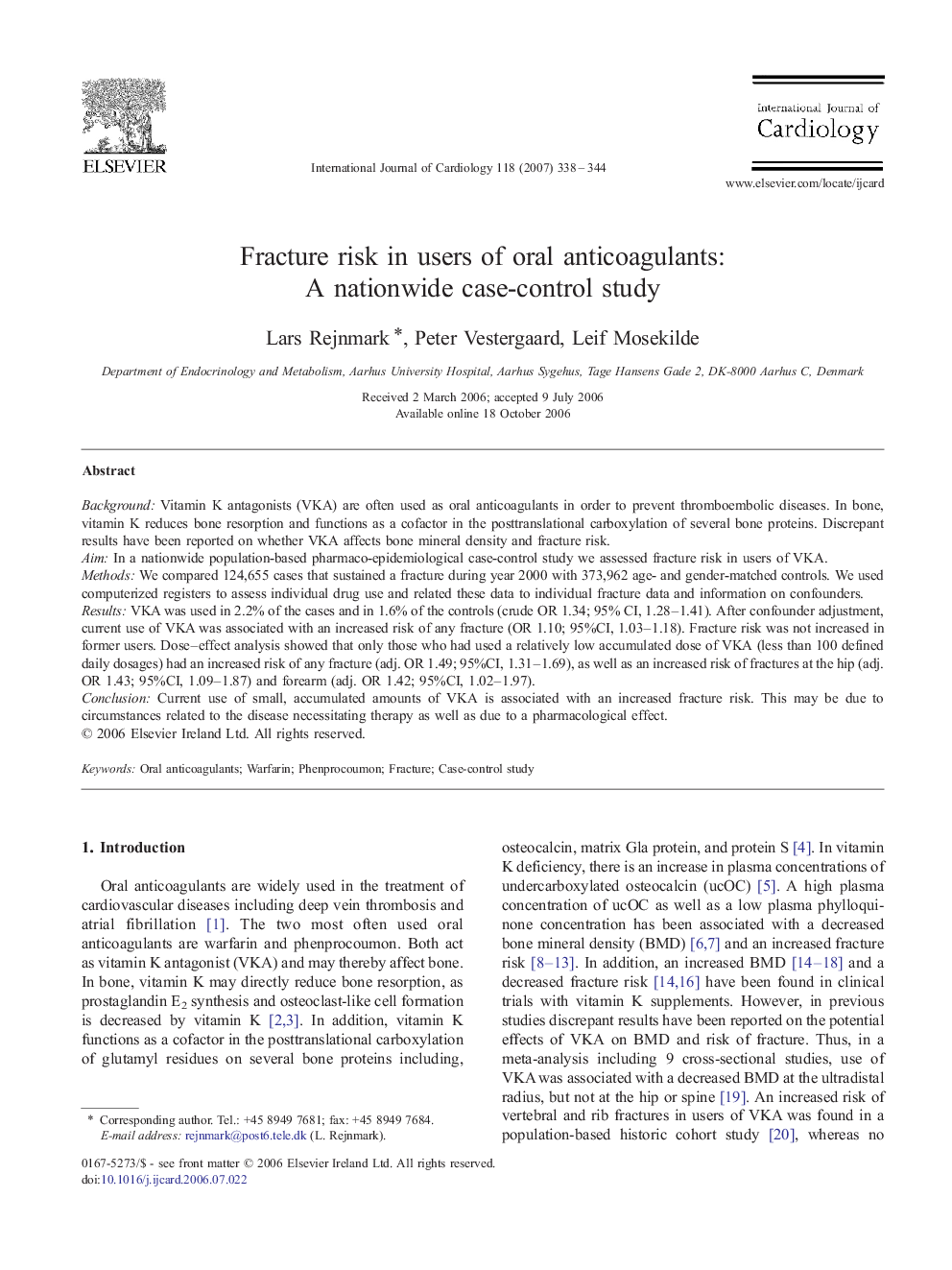| Article ID | Journal | Published Year | Pages | File Type |
|---|---|---|---|---|
| 2936331 | International Journal of Cardiology | 2007 | 7 Pages |
BackgroundVitamin K antagonists (VKA) are often used as oral anticoagulants in order to prevent thromboembolic diseases. In bone, vitamin K reduces bone resorption and functions as a cofactor in the posttranslational carboxylation of several bone proteins. Discrepant results have been reported on whether VKA affects bone mineral density and fracture risk.AimIn a nationwide population-based pharmaco-epidemiological case-control study we assessed fracture risk in users of VKA.MethodsWe compared 124,655 cases that sustained a fracture during year 2000 with 373,962 age- and gender-matched controls. We used computerized registers to assess individual drug use and related these data to individual fracture data and information on confounders.ResultsVKA was used in 2.2% of the cases and in 1.6% of the controls (crude OR 1.34; 95% CI, 1.28–1.41). After confounder adjustment, current use of VKA was associated with an increased risk of any fracture (OR 1.10; 95%CI, 1.03–1.18). Fracture risk was not increased in former users. Dose–effect analysis showed that only those who had used a relatively low accumulated dose of VKA (less than 100 defined daily dosages) had an increased risk of any fracture (adj. OR 1.49; 95%CI, 1.31–1.69), as well as an increased risk of fractures at the hip (adj. OR 1.43; 95%CI, 1.09–1.87) and forearm (adj. OR 1.42; 95%CI, 1.02–1.97).ConclusionCurrent use of small, accumulated amounts of VKA is associated with an increased fracture risk. This may be due to circumstances related to the disease necessitating therapy as well as due to a pharmacological effect.
